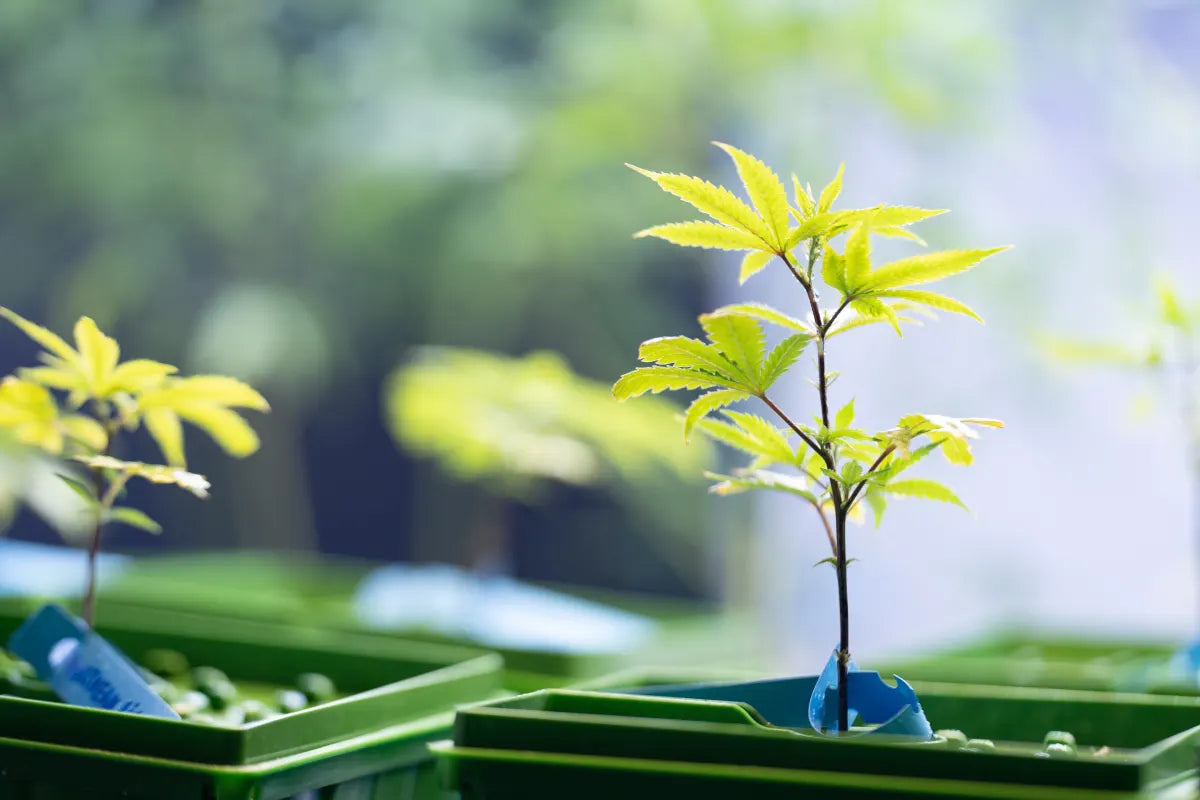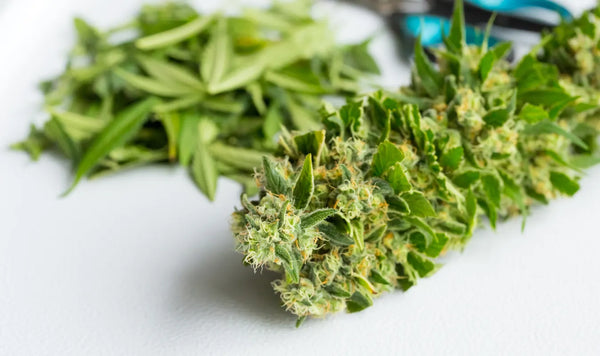How to Grow a Weed Plant? Cultivating Weed

Selecting the Right Strain for Grow a Weed Plant
Selecting the right weed strain is a crucial decision that significantly impacts your cultivation experience and the final product. The wide variety of strains available can cater to different preferences, growing environments, and desired effects.
First of all, define the purpose of growing weed. Are you aiming for medicinal benefits, recreational use, or specific effects like relaxation or creativity? If you have decided, let's cover the basics to help you choose the right strain for your weed cultivation.

Indica vs. Sativa vs. Hybrids:
Understand the differences between indica and sativa strains. Indicas tend to provide a more relaxing, body-centered effect, while sativas offer an energizing, cerebral high. Hybrids combine characteristics of both.
Effects and Potency:
Research the effects and potency of different strains. Some are high in THC, providing a stronger psychoactive effect, while others are higher in CBD, offering medicinal benefits without a strong high.
Growing Environment:
Consider your growing environment. Some strains thrive indoors, while others do better outdoors. Factors like space, temperature, humidity, and light availability influence strain selection.
Yield and Growth Traits:
Assess the growth traits and yield potential of strains. Some strains produce higher yields, while others might have shorter flowering times or easier growth characteristics suitable for beginners.
Aroma and Flavor:
Take into account the aroma and flavor profile you prefer. Strains vary widely in taste and smell, ranging from fruity and sweet to earthy or skunky.
Genetic Stability and Reputation:
Opt for strains with a good reputation and stable genetics. Trusted breeders often produce consistent and reliable strains that are less prone to unexpected variations.
Research and Reviews:
Read reviews and gather information from reputable sources. Online forums, weed publications, and user reviews can offer insights into specific strains and their performance.
Experimentation and Exploration:
Don't be afraid to experiment with different strains. Cultivating multiple strains over time can help you discover what works best for your preferences and growing conditions.
Availability and Accessibility:
Consider the availability of seeds or clones for the chosen strain. Some strains might be rare or harder to find, impacting accessibility.
Choosing the Growing Medium for Weed Plant
Selecting the appropriate growing medium is crucial for successful weed cultivation. Different mediums offer unique advantages and considerations.
Soil:
Organic Soil: Rich in nutrients and beneficial microorganisms, organic soil provides a natural environment for plant growth. Look for well-balanced soils or create your own using compost, perlite, and other organic amendments.
Potting Mixes: Pre-made potting mixes tailored for weed cultivation are available. Ensure the mix is well-draining and specifically formulated for weed.
Coco Coir:
Made from coconut husks, coco coir is an excellent alternative to soil. It retains water well while allowing for good aeration and root development. It's typically pH-neutral and can be used with nutrient solutions.
Hydroponics:
Deep Water Culture (DWC): Plants grow directly in a nutrient-rich water solution. It requires careful monitoring of pH and nutrient levels but can lead to rapid growth.
Ebb and Flow: Uses a flood-and-drain system where plants are periodically flooded with nutrient solution. It provides good aeration and nutrient uptake.
Drip Systems: Nutrient solutions are dripped directly onto the roots. Precise control over nutrient intake can be achieved, but it requires regular maintenance.
Aeroponics:
Roots are suspended in the air and misted with nutrient solutions. This method promotes rapid growth and efficient nutrient absorption but requires careful monitoring.
Considerations for Choosing:
Nutrient Levels: Some mediums, like hydroponics or coco coir, require precise nutrient management as plants rely solely on added nutrients.
Water Retention: Soil retains water better than some hydroponic systems, which might require more frequent watering or monitoring.
pH and EC Levels: Different mediums have varying pH and electrical conductivity (EC) levels. Ensure the medium aligns with the pH requirements of weed plants.
Personal Preference and Experience:
Consider your experience level and personal preference. Soil-based mediums might be more forgiving for beginners, while hydroponic systems might offer faster growth but require more attention to detail.
Accessibility and Availability:
The availability of the medium and the ease of acquiring it should also be considered. Some areas might have limited access to certain growing mediums.
Mixing and Amendments:
Many growers customize their mediums by mixing different substrates or adding amendments for improved drainage, aeration, or nutrient content.
Ultimately, the choice of growing medium depends on factors like experience, desired growth characteristics, available resources, and the level of control you wish to maintain over the plant's nutrient intake. Experimentation and adjusting based on your plant's response can help determine the most suitable medium for your weed cultivation.
Essential Equipment and Tools for Growing Weed
Equipping yourself with the right tools and equipment is essential for successful weed cultivation.
Grow Lights:
LED, HID, or fluorescent lights provide the necessary light spectrum for different growth stages. LEDs are energy-efficient and emit less heat, while HIDs offer high-intensity light.

Ventilation System:
Fans, exhaust systems, and intake fans regulate temperature, humidity, and air circulation within the grow space. This helps prevent mold and pests and maintains optimal growing conditions.
Growing Containers:
Choose pots or containers suitable for your chosen growing medium. Fabric pots provide good aeration and drainage, while plastic pots are durable and affordable.
pH and EC Meters:
Measure and maintain the pH and electrical conductivity (EC) of the nutrient solution or soil. This ensures proper nutrient uptake by the plants.
Nutrients and Supplements:
High-quality fertilizers specifically designed for weed plants. Consider nutrients for different growth stages (vegetative and flowering) to support healthy growth.
pH Up and Down Solutions:
Adjust the pH levels of water or nutrient solutions to maintain the ideal pH range for weed growth.
Temperature and Humidity Monitor:
A thermometer and hygrometer help monitor temperature and humidity levels in the growing space.
Trimming Tools:
Sharp scissors or pruning shears for trimming leaves and buds during harvest and maintenance.
pH-Adjusted Watering Can or Sprayer:
Use for precise watering or foliar feeding, ensuring the pH of water or nutrient solutions is within the required range.
Trellis or Netting:
Support structures for training and maintaining plant canopy, especially useful for maximizing light exposure and optimizing space.
Timer:
Set light cycles for vegetative and flowering stages. Timers also control the on/off cycles of other equipment.
Protective Gear:
Gloves, masks, and eye protection for handling fertilizers, pesticides, or during pruning.
Propagation Supplies:
Seedling trays, domes, and rooting hormones for germination and propagation if starting from seeds or clones.
pH-Buffering Solutions:
Products like pH buffers help stabilize pH levels in soil or growing mediums.
Water Filtration System:
Filters or purifiers to ensure the water used for irrigation is free from contaminants or unwanted minerals.
Thermometers with Probes:
To accurately measure temperature at the root level for hydroponic or soil-based setups.
Pest and Disease Control Supplies:
Organic pesticides, neem oil, or beneficial insects for preventive or responsive pest management.
Weed Cultivation Stages
Weed cultivation is a multi-stage process that requires attention to detail and care at every phase. From seed to harvest, each stage plays a crucial role in the plant's development, potency, and overall quality.
Germination:
The journey begins with selecting high-quality seeds or clones. Germination marks the start of growth, where the seed cracks open and the taproot emerges. It’s a delicate stage where environmental conditions and moisture levels are crucial for success.
Seedling Stage:
During this phase, the weed plant starts developing its first sets of leaves. It requires gentle watering and a favorable light cycle to ensure proper growth without overexerting the young plant.
Vegetative Stage:
Here, the plant focuses on leaf and stem growth. Providing the right nutrients, light exposure, and space for roots to expand becomes pivotal. The goal is to establish a strong, healthy foundation for future flowering.
Flowering Stage:
The transition to the flowering stage marks the onset of bud development. Altering light cycles triggers the plant to produce flowers, which contain cannabinoids like THC and CBD. Careful monitoring of nutrients and environmental factors is crucial to maximize bud quality.
Harvesting:
Determining the optimal time for harvest is a crucial decision. Harvesting too early can reduce potency while waiting too long risks the degradation of cannabinoids. Trimming and curing the buds properly post-harvest ensures the best flavor and potency.
Post-Harvest Processing:
After harvesting, the curing process begins. This involves drying the buds in a controlled environment to enhance their taste, smell, and potency. Proper curing can significantly impact the overall quality of the final product.
Storage:
Storing weed correctly is essential to preserve its potency and freshness. Factors like temperature, humidity, and light exposure need to be carefully managed to prevent degradation.
Remember, local laws and regulations regarding weed cultivation vary, so always ensure compliance with legal requirements. Additionally, each strain might have specific needs and nuances, so understanding the particular characteristics of the strain you're growing can significantly impact your success.




